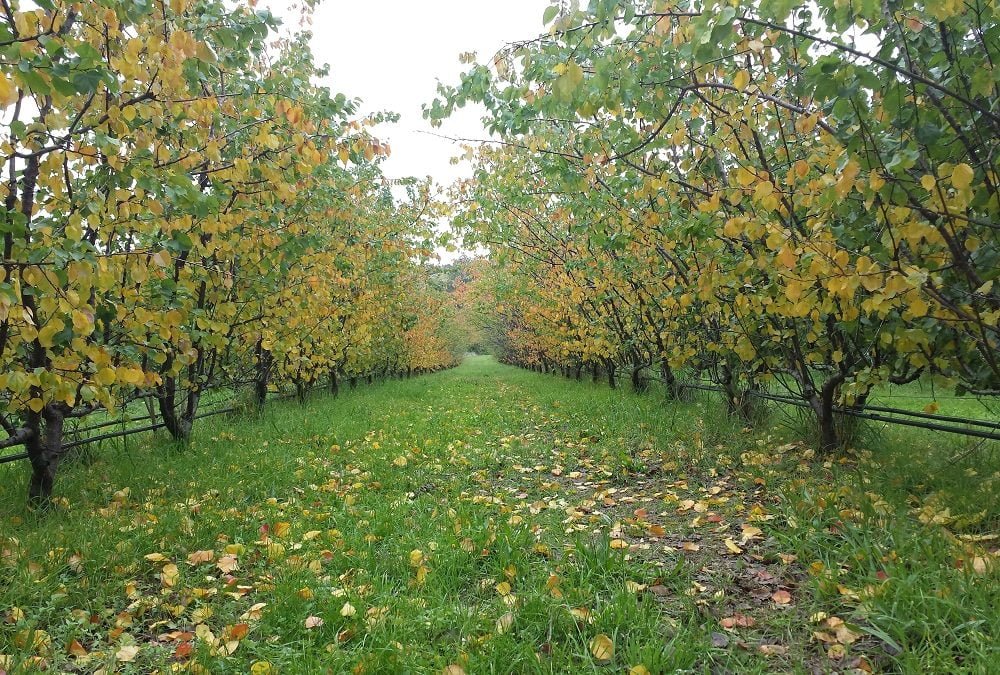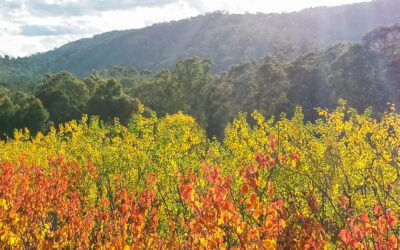Estimated reading time: 5 minutes
Are the leaves that fall from your fruit trees in autumn a bonus for your garden, or a problem? We’re often asked if it’s OK to let them rot on the ground, or can they cause disease?
Should you be picking all the leaves up and doing something with them? And if so, what?
People often ask these questions because they’re noticing yellow leaves on their trees and wondering if they’re carrying a disease. There are 4 main reasons for yellow leaves. In autumn, it’s usually due to the natural process of going into dormancy.
There’s often not a simple answer to these questions. In fact, issues like this need to be decided by comparing the costs of taking action (in time, money, or effort) against the benefits.
What can you do with fruit tree leaves?
Consider what you’ll do with the leaves if you collect them, and factor that into the equation. If they can be composted or fed to animals, and therefore returned to the soil, great! That would be providing a positive result for your hard work.
But it’s a very different equation if they’re filling up your greenwaste bin, being burned, or—horror of horrors—going into landfill! In that case, you’re turning a potential resource into a climate-changing problem.
The best-case scenario is to return the lovely organic matter and nutrients in leaves to the soil. The easiest way to do this is to allow nature to take its course and just let the leaves break down where they fall.
However, if there are fungal spores on the leaves, which may create disease in the tree next season, there may be a potential risk. Two fungal diseases that can overwinter on leaves are Black Spot and Blossom Blight.

Is it OK to let leaves rot under fruit trees?
The rule of thumb is that it’s best to let the leaves rot under the trees as long as they break down quickly. They should disappear within a couple of months, and certainly before next spring.
This is the least amount of work for you and will give significant benefit to your soil.
However, it does rely on you having reasonably healthy soil. Your soil should have an active soil food web and plenty of worms.
The worms will actually come to the surface and harvest the organic matter as the leaves break down. This very effectively ‘cleans’ the fungal spores and removes them from beneath your tree.

If you find the leaves are not breaking down fast enough, you can help them by mowing them with the mower or slasher. A sprinkle of compost on top, or spraying them with compost tea or worm juice can also speed up the rotting process.
Getting chooks or other animals on the job can help too, as they’ll scratch and peck the leaves and help them break down faster.
Making compost from fruit tree leaves
If you’re a composter (or would love to be a composter), fruit tree leaves become a valuable resource. They form one of the all-important ‘brown’ ingredients that make up the bulk of the compost.
There is even a composting system that uses almost exclusively leaves, called the Johnson-Su Bioreactor. It creates a diverse, fungally-dominated compost that is perfect for fruit trees.
It’s quite a simple system that is easy to do in most backyards. The compost takes a full 12 months to finish, and it requires a simple irrigation system to keep it at 70% moisture the whole time.
It’s worth the wait, though, because DNA analysis has shown that it can contain thousands of different bacterial and fungal species, including high numbers of nitrogen-fixing organisms.
If you’re feeling adventurous, the Johnson-Su system is one of the best ways of turning your fruit tree leaves into black gold for your soil.
Related Articles
3 simple ways to improve your soil
Here are 3 simple ways to kickstart the health of your soil to help you grow fruit that is full of vitamins and minerals.
Should you spray your fruit trees in autumn?
Spraying fruit trees should always be kept to a minimum to protect soil health, but sometimes a spray in autumn is the right thing to do.
Natural fertility for fruit trees in Autumn
Autumn is a great time to apply some natural fertility to your fruit trees before they go to sleep for the winter.







